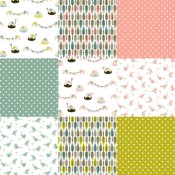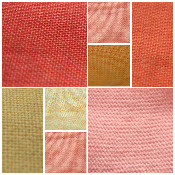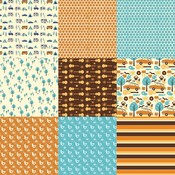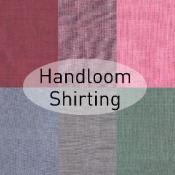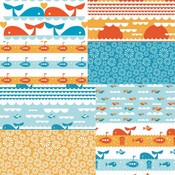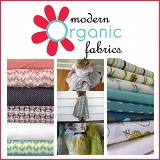10 Tips For Successful Sewing with Patterns

I thought I'd write up a little list of tips for sewing with patterns. This list is directed to those with beginner's skills, or who may have had unsuccessful projects in the past. I certainly hate spending money on patterns and fabrics only to end up with a completely failed project. We all make mistakes (and learn valuable sewing lessons). Some mistakes are can be corrected (ripping out stitches when you sew pieces together backwards, for example). Some mistakes make your garment unwearable. Let's review some steps that will drastically increase your chances for success!
1. Start with an easy pattern. There's a reason why everyone made aprons and skirts in home ec class (do they still teach that class in high school?) - they are easy to make. They make you feel good about your mad skills. They give you confidence. Your first pattern should be an apron or a skirt that is marked as a beginner's pattern. After that, venture on to other patterns for beginners. And, when you are ready to venture on, don't try to learn too many new things on one garment.
2. Be sure to pick something you'll really wear. A lot of beginning patterns are cute, but if you don't wear skirts, make a cute apron. If you don't use aprons, at least it will look nice hanging in your kitchen. Or, give it to a friend or family member. Be sure it is someone who will fawn all over it and tell you how great you are :) See The Selfish Seamstress if you're looking for reasons why you should only sew for yourself. Of course, if you have a little girl, by all means make her a skirt. Little girls love what their mommies make them (By little, I mean under 12 years old. After that, good luck!) Have a little boy? Make something for him as your second or third project.
3. Pick the right fabric. This is so important, I'd love to put it in all caps and shout it at you, but I won't. There are two components to this tip. First, pick a fabric type that is recommended on the pattern. No exceptions if you are a beginner, and I daresay few experienced seamstresses waver far from this rule. If the pattern says "lightweight woven" don't use denim or home decorator weight fabric. Don't do it. You won't like the results and won't wear the garment. If you're unsure if a certain fabric is right for the pattern, ask your friendly fabric shop owner or clerk. We really, really want you to succeed! Second, pick a fabric that looks like something you would wear. Just because the fabric has a really great designer pattern doesn't mean you would want to wear it on your body. Consider that when picking fabric. If you love to wear grey, use grey fabric, or a fabric that compliments grey. Don't spend a lot of time and money on a project that isn't you. Exception: aprons. Use your fun patterned fabrics from coordinating collections on aprons.
4. Always prewash your fabric. Fabric shrinks. Or bleeds. Prewash it so it doesn't shrink or bleed after you've poured your heart and soul into it. For garment sewing, some people like to prewash two or three times just to be sure that the garment won't shrink after it is all put together.
5. Set up an iron with your sewing machine. Your iron is (almost) as important as your sewing machine. You cannot sew without it. No, you can't. Why? For starters, you need to iron your fabric before cutting the pattern pieces out. Some folks like to iron the pattern itself because it's all wrinkly with fold lines. You will also need to press your seams and hems. Sewing is really like this: sew, press, sew, press, sew, press ... and on and on.
6. True up and square up your fabric. This is the step I always want to skip, but it is oh-so-important that your garment hangs correctly. You will notice that something isn't right if you skip this step. I'm going to direct you here (a video) and here (a pdf) for details on how to true up and square up.
7. Pay attention to your pattern layout. Check, double check, triple check that every piece is exactly where it belongs on the fabric, that the fabric is folded the right way, that you're using the right layout for the width of your fabric, that you cut the right number of pieces, that pieces that belong on the fold are on the fold. Use the grain line on the pattern to check that your fabric is straight. Does it seem like there's a lot of work before you even get the sewing machine out? There is! Although, these steps get easier the more you do them. But, double checking the pattern layout is always recommended because cutting your fabric wrong at best requires a trip for more fabric and at worst causes you to scrap the project.
8. Follow the directions on the pattern. In order. They wrote them in that order for a reason. Now, I do know that more experienced seamstresses will often alter the order they put together a garment. And, they often have good advice. You can check Pattern Review to see if someone with more experience has made the pattern you're using and has some sound advice for deviating from the directions. Failing that, stick to the directions. Also, if you're using "boutique patterns" (that is, not from the big pattern companies but from smaller designers), the directions are usually excellent with photographs or detailed drawings.
9. Invest in a sewing reference book. One with directions and pictures for everything. I have The Vogue Sewing Book copyright 1975. I purchased it at a thrift store for $4.00. It has every stitch and construction method I'll probably ever use and more. It has 460 pages of instruction. If a term or instruction in your pattern seems confusing or isn't explained well, it's nice to be able to consult a book. You can check the web, of course, but I always end up getting distracted. And, I'm not always sure where to find exactly what I'm looking for so I end up spending a lot of time searching and not sewing.
10. Finish it. Finish every part of the garment. Press the seams, clip the threads. Go over every seam and clip those threads! Follow all the steps for finishing seams (clipping allowances, zigzaging, etc) that are recommended by the pattern. Finish the hems.
Unofficial 11. Be forgiving. Everything may not be perfect and don't sweat it. Most people don't even notice the things you stressed out about (uneven gathering always seems to be my breaking point!) Following the steps above will help you make a better garment, but it's hard to be perfect. Just do the best you can and you will have a garment to be proud of!
Of course, there is so much more to sewing patterns than what I have here, but I wanted to go over the non-stitching part of it. I think when you are new to sewing you don't always realize how much prep and non-sewing work goes into making a garment. I want to encourage you to try garment sewing, if you haven't already, and I think the best way to ensure success it to BE PREPARED!
As you may know, I have three young girls and not a lot of time to sew. If I know I will have a couple hours on Saturday to sew, I like to have everything ready ahead of time. I might prepare for the project like this:
Sunday: Check that I have the right amount of fabric, the right color of thread and read through the directions to see ahead of time where I might have trouble. I like to understand how the garment will come together before I start. I try to imagine every step. Really, I do.
Tuesday: Wash fabric alone (in case it bleeds). If it does bleed, wash it again (and again) until it doesn't.
Wednesday: Press fabric, cut out paper pattern pieces and press if really wrinkly.
Thursday: Layout pattern pieces on fabric and cut fabric
Saturday: Set up the machine and thread it. Set up iron and ironing board. Sew away!
I hope some of you can use this advice and feel encouraged to start sewing clothes. Remember, it's harder at the beginning and as you gain experience it will get easier and more fun. And, avoiding beginner mistakes from the beginning can only help.
 Wednesday, February 10, 2010 at 5:00AM | |
Wednesday, February 10, 2010 at 5:00AM | |  9 Comments
9 Comments 
